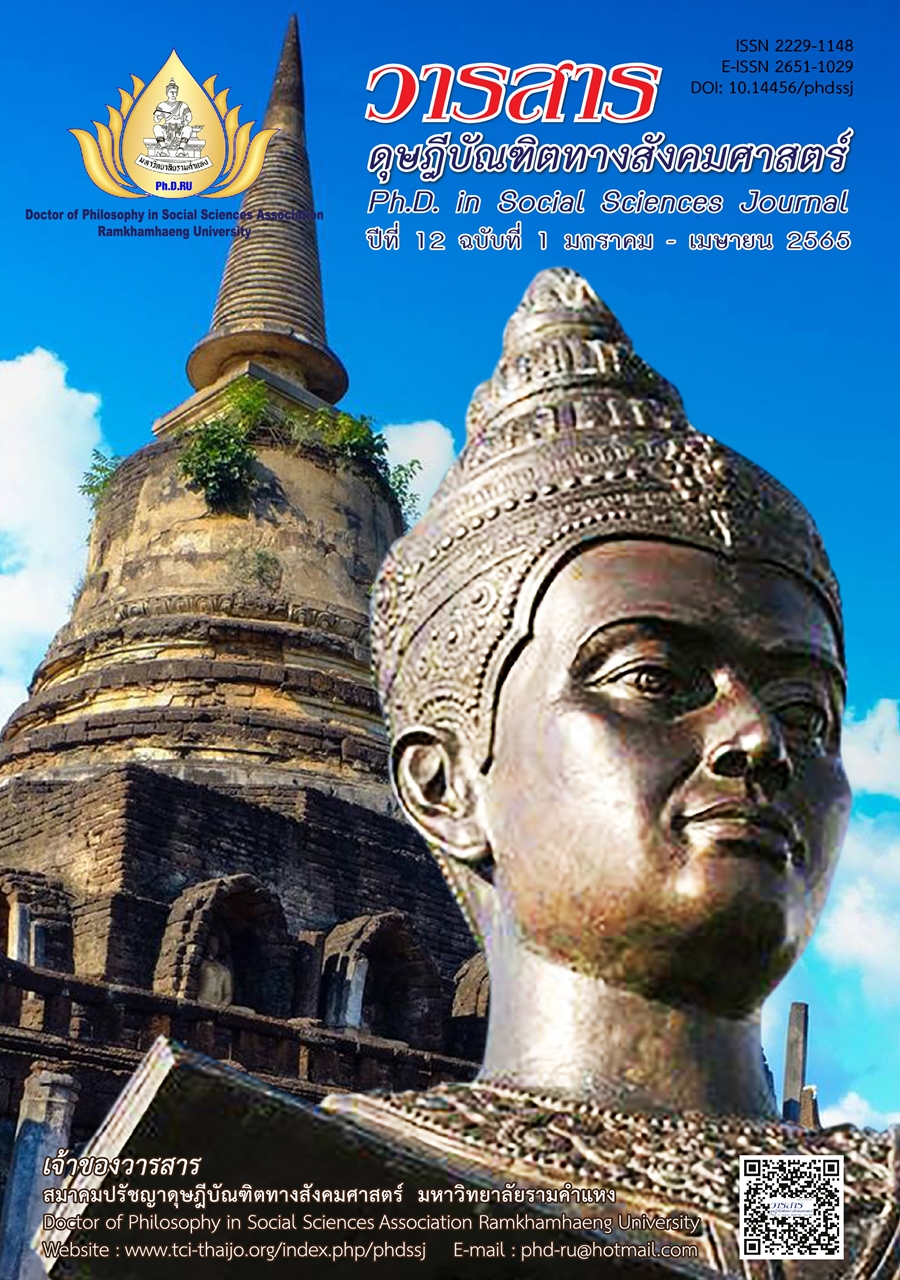Attractive Power of Thailand on Chinese Tourists: The Beauty of Rattakosin Island Surroundings in Cultural Domains
Main Article Content
Abstract
The objectives of this research are as follows: To study the level of Thai Attractive Power in Cultural Domains, the roles of the Arts and Social Domain and the Tourist Zones Domain in order to develop the relationships and cooperation with China in term of culture for the future. The research was computed by factors analysis providing into 5 aspects: Architecture (ARCH), Business (BUSS), Religion (RELG), Social (SOCL) and Culture (CULT).
Findings are as follows: (1) The strength/advantage of Attractive Power of Thailand (ATTRT) is Siamese smile, Thai Durian and safety accommodation. The architecture of Thai temples, the Believe and faith on Buddha images (both genuine and souvenirs) and holy materials are also attractive, etc. (2) The Attractive Power of Thailand is high and it is a part of Soft Power focusing on culture and faith being accepted. (3) To develop Soft Power is dealing and negotiating business for new comers in future. (4) Thai history are interested by Chinese tourists both teen-agers and business men including Thai cultural knowledge in term of Tourist Zones. They search the history via internet. Tourist Zone Domain is computed by Factor analysis being divided into 4 aspects: History (HIST), Believe and Faith (FAITH), Souvenirs (SOUV) and Ecology (ECO). The Arts and Social Domain is computed by factor analysis being divided into 4 aspects: Holy place (HOLY), Food and desserts (FOOD), Tradition (TRAD) and Environment (ENV). These 8 aspects are affecting Attractive Power (ATTRT), excluding FOOD and TRAD.
Article Details

This work is licensed under a Creative Commons Attribution-NonCommercial-NoDerivatives 4.0 International License.
Academic articles, research articles, and book reviews in the Ph.D. in Social Sciences Journal are author’s opinions, and not the publisher’s, and is not the responsibility of the Ph.D. in Social Sciences Journal Philosophy Association, Ramkhamhaeng University. (In the case that research is done on human, the researcher has to be trained in Ethics for Doing Research on Human Training and has to produce the evidence of the training).
References
Barnard, A. (2000). History and theory in anthropology. Cambridge University Press.
Crossman, A. (2020). Understanding purposive sampling: An overview of the method and Its applications. Retrieved from https://www.thoughtco.com/purposive-sampling-3026727
Baker, C. (2009). A history of Thailand (2nd ed.). Cambridge University Press.
Bangkok History and Name. (2022). Retrieved from https://hmong.in.th/wiki/Bangkok_province [In Thai].
Darwin, C. (2016). Darwin’s theory of evolution: The origin of species. 50 Minutes.
King, G., Wright, M., & Goldstein, M. (2022). Diffusionism and acculturation. Retrieved from https://anthropology.ua.edu/theory/diffusionism-and-acculturation
Mayo, E. (1949). Hawthorne and the Western Electric Company. In D. S Pugh (Ed.). Organization theory: Selected readings (2nd ed., pp. 279-292). Penguin.
Parsons, T. (1951). The social system. The Free Press.
Phraya Anuman Rachaton. (1972). Meaning of culture. Aksorn Charoenthat. [In Thai].
Tucker, B. (2013). Cultural ecology. In R. Jon McGee & R. L. Warms (Eds.), Theory in social and cultural anthropology: An encyclopedia (pp. 142-147). Sage.
Dubberly, H., & Pangaro, P. (2019). Cybernetics and design: Conversations for action. In T. Fischer & C. M. Herr (Eds.), Design cybernetics: Navigating the new (pp. 85-99). Springer.
Welsch, R. L., & Vivanco, L. A. (2014). Cultural anthropology: Asking questions about humanity. Oxford University Press.


